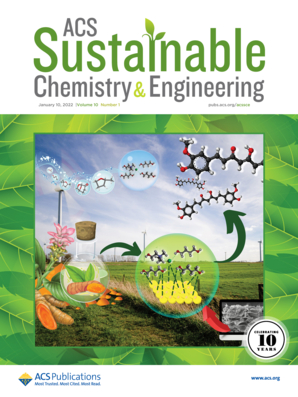Technoeconomic Assessment of Offshore Carbon Storage Multiphase Source-Sink Matching Based on Multiwell Optimization in Eastern Coastal China
IF 7.1
1区 化学
Q1 CHEMISTRY, MULTIDISCIPLINARY
引用次数: 0
Abstract
Offshore carbon capture utilization and storage (CCUS) is essential for addressing greenhouse gas emissions in China’s emission-intensive, land-constrained coastal regions. This study combines a dynamic reservoir estimation model with a drilling economic model to develop a multiwell optimization scheme that efficiently balances cost efficiency and storage capacity. The cost of saline aquifer storage varies from $3.69 to $12.51/tCO2. A multiphase offshore storage source-sink matching model underpinned by a multiwell optimization framework is proposed to minimize full-process costs by integrating emission sources, coastal hubs, transport pipelines, and storage sinks. The network is economically optimized over a 25 year planning horizon to identify the optimal matching schemes, pipeline development, and phased economic evaluations. The results suggest that a 4.59 Gt emission reduction from 154 stationary sources in Zhejiang Province is economically feasible at an expenditure of $236.03 billion. The optimal CCUS network incurs a unit cost of $51.22/tCO2, dominated by capture cost at 84.23%. The Qiantang, Minjiang, and Fuzhou basins are progressively developed and utilized. Notably, as the learning rate of technological advancements increases from 0.02 to 0.08, the unit capture cost decreases by 50.12%. This study provides guidance for the green low-carbon transition of offshore storage in the coastal regions of China.

求助全文
约1分钟内获得全文
求助全文
来源期刊

ACS Sustainable Chemistry & Engineering
CHEMISTRY, MULTIDISCIPLINARY-ENGINEERING, CHEMICAL
CiteScore
13.80
自引率
4.80%
发文量
1470
审稿时长
1.7 months
期刊介绍:
ACS Sustainable Chemistry & Engineering is a prestigious weekly peer-reviewed scientific journal published by the American Chemical Society. Dedicated to advancing the principles of green chemistry and green engineering, it covers a wide array of research topics including green chemistry, green engineering, biomass, alternative energy, and life cycle assessment.
The journal welcomes submissions in various formats, including Letters, Articles, Features, and Perspectives (Reviews), that address the challenges of sustainability in the chemical enterprise and contribute to the advancement of sustainable practices. Join us in shaping the future of sustainable chemistry and engineering.
 求助内容:
求助内容: 应助结果提醒方式:
应助结果提醒方式:


